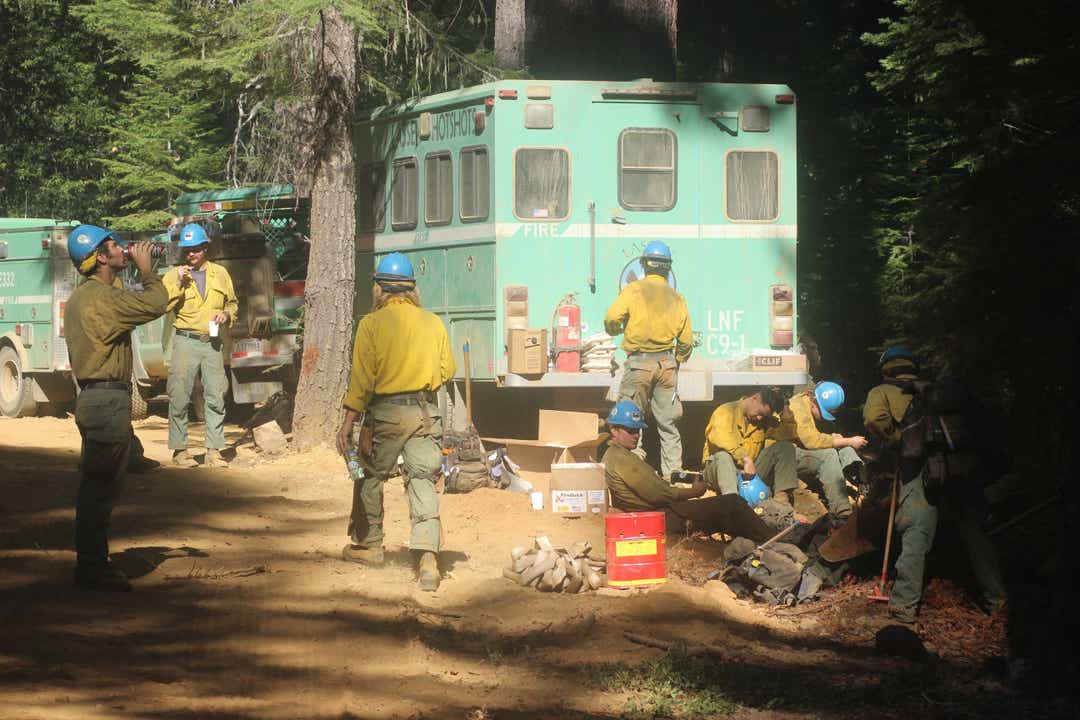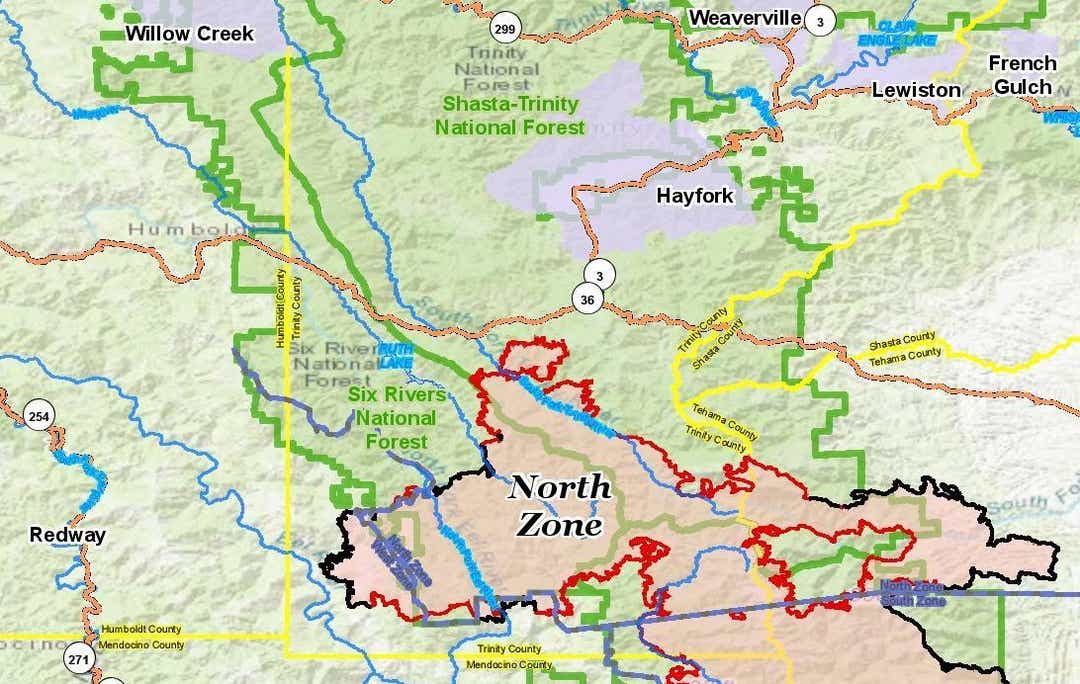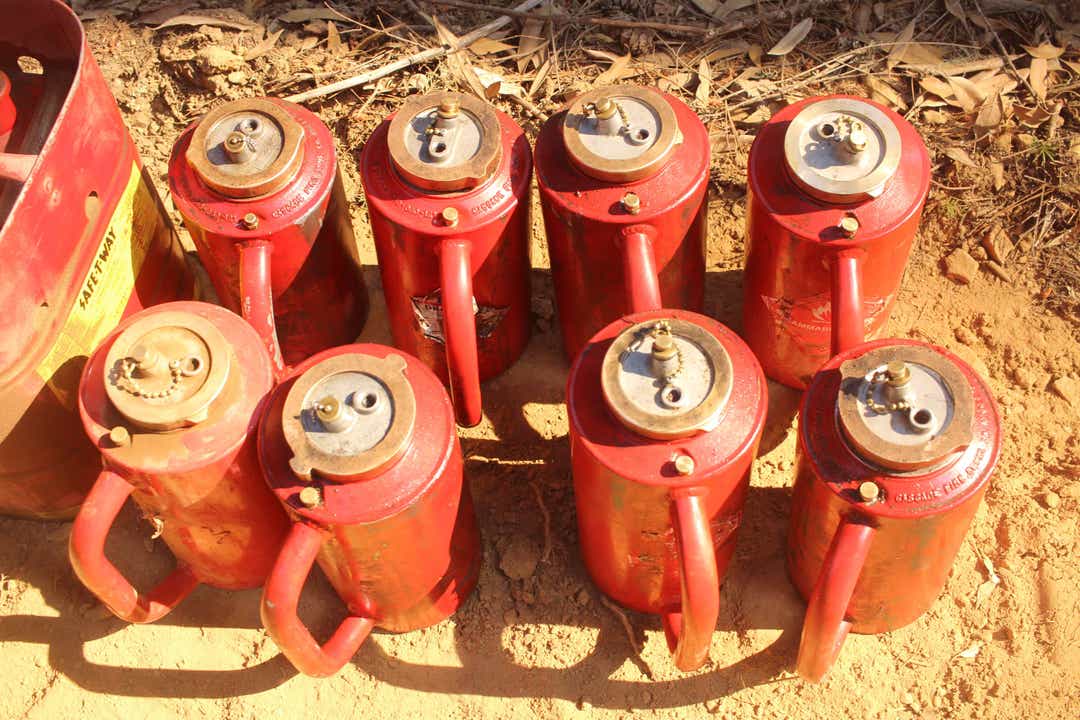The largest wildfire in the history of California has crept toward several remote Trinity County communities but so far a team of experienced firefighters has kept the flames at a distance.
Crews have surrounded about 100 residences with fire hoses in the Ruth and Post Mountain areas, and have built long stretches of fire lines in Ruth Valley where the communities sprawl into the hillsides and have roads with no names.
“We are prepared for that main fire to come into Ruth as best as we can,” said Mike McMillan, a contracted public information officer who’s sponsored by the Bureau of Land Management out of Boise, Idaho.
Some 3,000 residents have been told to evacuate, although many of them are staying where they live, especially in the Post Mountain area.
McMillan has been sharing photos of firefighters in tense situations from the North Zone of the August Complex and from earlier during the former Elkhorn Fire west of Red Bluff.
As of Tuesday, all zones in the complex had burned 846,898 acres and was 38% contained.
Firefighters are dealing with flames sometimes torching 80- to 100-foot Ponderosa pines and sugar pines, falling trees and rocks rolling down hills during the hot and grimy summer.
From a spot near the U.S. Forest Service’s Ruth Guard Station under smoke-filled skies, McMillan explained how the blaze is being fought and provided insights from a firefighter’s perspective. Blame the blazes on Mother Nature, he said, not a conspiracy of human-caused fires.
Latest on North State wildfires: Crews work to protect homes in August Complex
The northern part of the fire in Trinity County is being fought mainly with bulldozers and firing operations and not with fire-fighting aircraft.
“Even if we do have clear air, to be honest, air support (and) air resources, have limited effectiveness in this terrain with steep timber,” McMillan said.

He said if helicopters dropped water where it’s “hot,” they don’t have enough firefighters and equipment in the rugged terrain to dig hand lines or use chain saws to make a stand. Water drops in those situations are a waste of water and money, he said.
“Often the public wants to see water being dropped to think it’s putting the fire out and it’s absolutely not unless there’s people on the ground to work with it,” McMillan said.

Instead, the plan is to back off to areas where dozer operators can build their own fire lines by using natural and man-made barriers such as roads, cliffs and rock outcroppings.
“Once we have those lines in, we plumb them. That means we put water on them, put hose lays throughout all those control lines,” he said.
Water-tender drivers maneuver over the often rough, dirt roads to deliver water to 3,000-gallon portable, open-top tanks — sometimes called pumpkins — for firefighters’ use.
RelatedSmoke from August Complex mega fire brings bad air quality to the North State. Here's when it will lift
So far, the fire managers’ strategy is succeeding in accomplishing their main objective, which is preventing homes in Ruth and Post Mountain from burning up. As of Tuesday, the flames still were being kept south of Highway 36.
McMillan said crews have been able to keep up with the main fire with the dozer lines and firing operations.

“We’re having success checking the fire and slowing its progress,” he said.
The August Complex started Aug. 17 and is comprised of about 30 other lightning-strike fires, including the Elkhorn and Hopkins fires that merged with the main blaze.
“To alleviate any conspiracy or concerns about man-made fires, all of these are documented on that one day they started at the same time — small fires that grew together. These are all lightning (with) Mother Nature to blame for it,” McMillan said.
Read More: Pet python found safe in Northern California home during North Complex Fire
Every night, planes with infrared technology fly high above the smoke to map the fire’s perimeter to give fire managers a better picture the next morning.
Residents in the fire’s shadow should be comforted by the Alaska Incident Management Team, one of 100 such teams available to fight fires across the U.S.

McMillan was a smokejumper for 17 years in Alaska and this is his 32nd fire season.
“The Alaska team has decades and decades of fire experience behind them, much of it smokejumping in Alaska and the lower 48,” the 53-year-old McMillan said.
On Monday, they were on Day 3 of a 14-day assignment in the fire's north zone.
If there’s a positive spin, it’s the fact the fire is burning in a lot of dead slash laying on the ground and making the forest safer for times ahead.
“In many areas — people don’t like to hear it — but the fire is helping to clean up ground fuel and create a safer area for future fires to come through,” McMillan said.
Mike Chapman is a reporter and photographer for the Record Searchlight in Redding, Calif. His newspaper career spans Yreka and Eureka in Northern California and Bellingham, Wash. Follow him on Twitter @mikechapman_RS. Subscribe today!
tinyurlis.gdu.nuclck.ruulvis.netshrtco.de
مقالات مشابه
- نامه به سردبیر: 22 مه سال 2020
- مشاوره سئو - خدمات سئو
- قتل در ردینگ محله stuns جامعه
- Coronavirus Treasure Coast, مارس 23: 2 مرگ و میر در شهرستان مارتین سنت لوسی شهرستان 474 موارد
- لی شهرستان در مواجهه با سوال: چگونه به صرف $135M در فدرال محرک پول
- سوابق ID قربانی در 'مرگ مشکوک' در پورت سنت لوسی
- آیا ارتش سپاه منحرف 130 میلیون دلار از EAA مخزن برای کاهش دریاچه اوکیچوبی ترشحات?
- مارس 22: وزارت بهداشت گزارش نشان می دهد 951 تایید COVID-19 نفر در ساحل گنجینه; 1 جدید مرگ
- شما آماده برای 'همیلتون.' اما خود تلویزیون ؟ در اینجا چگونه به سازمان دیده بان دیزنی+
- برایان Burkeen صدور حکم به تعویق افتاد شنبه پس از گفتن قاضی او انتظار COVID-19 نتایج آزمون